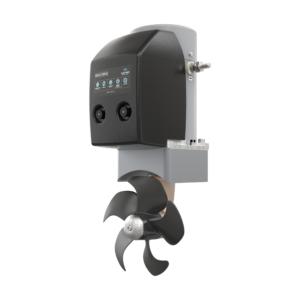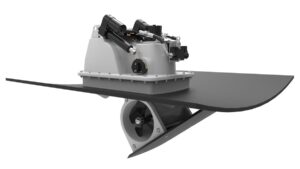
Tunnel Thruster vs Retractable Thruster
Overview


Tunnel thrusters and retractable thrusters are both essential devices that enhance a vessel’s maneuverability, but they differ significantly in their design, installation, and applications. Let’s explore the differences between tunnel thrusters and retractable thrusters:
Tunnel Thrusters:
1. Design and Installation:
- Tunnel thrusters are fixed, permanently mounted thrusters installed in tunnels or tubes within the hull of the boat. These thrusters are typically mounted in the bow or stern, and they generate lateral thrust to aid in maneuvering.
- Installation: Tunnel thrusters are installed during the boat’s construction or during a major retrofitting process. The hull is modified to create a tunnel, and the thruster is mounted inside it, with only the propeller and part of the tunnel visible from the outside.
2. Deployment and Operation:
- Fixed Position: Tunnel thrusters are always in a fixed position and cannot be retracted or raised into the hull.
- Continuous Operation: They can be operated continuously while the vessel is in motion, providing additional control during docking and other low-speed maneuvers.
3. Benefits and Limitations:
- Benefits: Tunnel thrusters enhance maneuverability, especially at low speeds and in confined spaces. They are effective for maintaining control during docking procedures and in areas with strong currents or winds.
- Limitations: The fixed nature of tunnel thrusters can lead to increased drag when the vessel is at higher speeds, potentially affecting fuel efficiency.
Retractable Thrusters:
1. Design and Installation:
- Retractable thrusters are thrusters that can be extended or retracted into the hull of the boat as needed. They are mounted on mechanisms that allow them to be deployed when required and retracted when not in use.
- Installation: Retractable thrusters are installed in a specially designed housing within the boat’s hull. The thruster can be lowered into the water when needed and raised into the hull to reduce drag when cruising at higher speeds.
2. Deployment and Operation:
- Flexibility: Retractable thrusters offer the flexibility of being deployed only when necessary. Boat operators can extend the thruster during docking or low-speed maneuvers and retract it when cruising at higher speeds.
- Reduced Drag: By retracting the thruster, boat owners can minimize drag, enhancing the vessel’s hydrodynamic efficiency and fuel economy.
3. Benefits and Limitations:
- Benefits: Retractable thrusters combine the benefits of enhanced maneuverability with the ability to reduce drag, making them ideal for boaters who want both precise control during low-speed operations and optimal performance at higher speeds.
- Limitations: Retractable thrusters may require more complex installation and maintenance due to their moving parts and mechanisms.
Conclusion:
In summary, tunnel thrusters provide consistent and continuous lateral thrust, aiding in maneuverability but potentially leading to increased drag. Retractable thrusters, on the other hand, offer the advantage of deployable thrust, allowing boaters to enjoy enhanced control during low-speed operations while minimizing drag and optimizing speed when retracted. The choice between tunnel thrusters and retractable thrusters depends on a boat owner’s specific needs, preferences, and the type of boating activities they engage in. Each type of thruster offers distinct advantages, ensuring that boaters can select the solution that best suits their requirement


